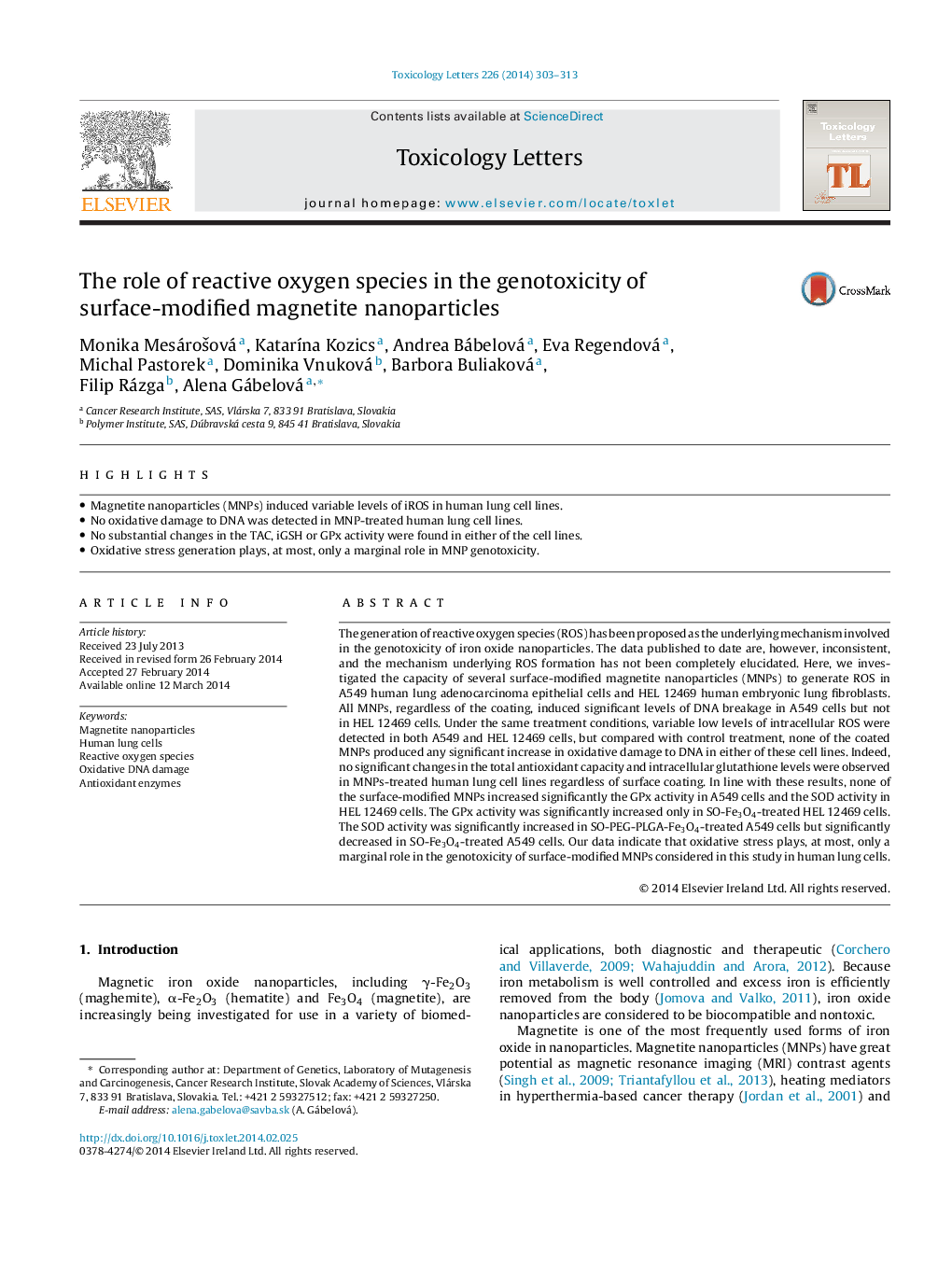| Article ID | Journal | Published Year | Pages | File Type |
|---|---|---|---|---|
| 5860321 | Toxicology Letters | 2014 | 11 Pages |
Abstract
The generation of reactive oxygen species (ROS) has been proposed as the underlying mechanism involved in the genotoxicity of iron oxide nanoparticles. The data published to date are, however, inconsistent, and the mechanism underlying ROS formation has not been completely elucidated. Here, we investigated the capacity of several surface-modified magnetite nanoparticles (MNPs) to generate ROS in A549 human lung adenocarcinoma epithelial cells and HEL 12469 human embryonic lung fibroblasts. All MNPs, regardless of the coating, induced significant levels of DNA breakage in A549 cells but not in HEL 12469 cells. Under the same treatment conditions, variable low levels of intracellular ROS were detected in both A549 and HEL 12469 cells, but compared with control treatment, none of the coated MNPs produced any significant increase in oxidative damage to DNA in either of these cell lines. Indeed, no significant changes in the total antioxidant capacity and intracellular glutathione levels were observed in MNPs-treated human lung cell lines regardless of surface coating. In line with these results, none of the surface-modified MNPs increased significantly the GPx activity in A549 cells and the SOD activity in HEL 12469 cells. The GPx activity was significantly increased only in SO-Fe3O4-treated HEL 12469 cells. The SOD activity was significantly increased in SO-PEG-PLGA-Fe3O4-treated A549 cells but significantly decreased in SO-Fe3O4-treated A549 cells. Our data indicate that oxidative stress plays, at most, only a marginal role in the genotoxicity of surface-modified MNPs considered in this study in human lung cells.
Keywords
Related Topics
Life Sciences
Environmental Science
Health, Toxicology and Mutagenesis
Authors
Monika MesároÅ¡ová, KatarÃna Kozics, Andrea Bábelová, Eva Regendová, Michal Pastorek, Dominika Vnuková, Barbora Buliaková, Filip Rázga, Alena Gábelová,
